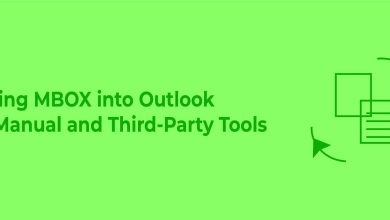Top Strategy Framework Important for Your Business

A strategy framework is a structural way for determining how an effort will help stakeholders achieve their major objectives.
Management employs a variety of strategy frameworks, ranging from simple to complex models. Also, this will strengthen the organisation. The strategy framework keeps you focused on the organization’s objectives.
Some companies use a single strategy at a time, while others use many strategies at the same time.
Choosing the Right Strategy Framework
1. Selecting the appropriate framework
The business strategy framework is something you use to put your approach into action. To select the appropriate framework, you must first properly grasp and articulate your approach. What is your plan of action?
Are you hoping to accomplish with your strategy? What is the end outcome like? You can select the appropriate framework if you have the proper answers to all of these questions.
There are many options and frameworks to choose from depending on the aim to be achieved and the approach to be applied.
2. The framework’s application
After you’ve created your approach, you’ll need to break it down into specific targets. All of these objectives will eventually lead to the achievement of your strategy. This strategy will be in line with the organization’s vision and objectives.
As a result, you must construct each goal using the framework you’ve chosen and apply the framework to all of them. Hence, as crucial as adopting the framework is achieving a synchronisation between the goals and the strategic framework.
3. Examining your strategy
After you’ve picked your strategic framework and applied it to your objectives, you’ll need to check the outcome and compare it to your strategy. There are a number of tools that may be used to determine the proportion of the target that has been reached through the use of the strategic framework.
When you review the strategic framework and where you stand on your goals, you will see the big picture. Also, the evaluation must include an analysis of the results after they have been obtained.
The Most Important Strategic Frameworks
The following are a few examples of business strategy frameworks that you might use in your company.
1. Analysis of Gaps
This is also known as a need gap analysis, in which the organization compares its current position to where it wants to be in the future. The difference between the two is established, as well as a strategy for closing the gap.
Gap analysis is typically used to investigate flaws in the organization’s internal procedures. In the case of gap planning, a change plan or a shift chart is always used.
Because there is a gap between the desired and present positions, a corporation seeks to close it, and all strategies are built around it with the sole purpose of closing the gap.
Determining your current position and deciding exactly where you want to be in the future are both important aspects of gap analysis. Gap analysis is deemed to be successful if these two synchronize together.
2. Strategic planning in real-time
Companies that do their strategic planning life or in real-time use the real-time strategic planning methodology. Also, they have a reactive strategy approach.
For example, if one company decides to introduce a product, the other company will develop a strategy based on the recently launched product rather than developing its own. Because we primarily focus on short-term goals and survival methods, long-term planning is irrelevant for these businesses.
The majority of non-profit organisations employ this technique to address a serious and urgent issue. Real-time strategic planning is divided into three stages.
2.1 Administrative
Vision, mission, values, competition, and other critical characteristics of the organisation are all part of organisational planning.
2.2 Programmatic planning
This method entails conducting research to see what possible services an organisation may provide to assist it fulfil its objective.
2.3 Execution
The operational level refers to the organization’s internal processes, workers, and systems that are used to build an in-house strategy and function.
3. The 7-S framework devised by McKinsey
There are seven different parts of the organisation separated as hard and soft areas in this approach. Hard aspects include strategy, systems, and structure. Soft components include style, expertise, staff, and common ideals. This is because they serve as the organization’s foundation and lead to long-term competitive advantage.
A strategy is a thorough plan devised by a company in order to increase market share and gain a competitive edge. Also, the strategy is always in line with the organization’s vision, mission, and values.
The structure is the way the business’s many sections and divisions are organised. The structure contains all of the information regarding who is responsible for which division and unit. Also, when opposed to an unstructured or flat organisation, a structured organisation always wins.
The procedures or methods that explain how everyday actions and choices are made are known as systems.
Employee skills are critical to the organization’s success. Therefore, the better a person is at their job, the better for the company.
The number of employees who work for a company is referred to as its staff. Also, full-time, part-time, and other related personnel are included.
The way upper management interacts with employees is referred to as style.
Employee conduct is guided by shared values, which are the organization’s values. Also, this can be linked to employee behaviours as well as professional conduct.
4. Framework for Total Quality Management (TQM)
Total quality management is based on the principle of continual improvement through value addition. Every product or service should provide value to the consumer, according to the business. Also, total quality management is a paradigm that assumes the organisation will be successful in the long run.
It is the result of a collaborative effort by all employees, from the ground up to the board of directors. Customers will be satisfied if they concentrate on adding value and enhancing the product’s quality.
This approach emphasises continual improvement, often known as Kaizen. Moreover, the organisation concentrates on long-term gains rather than short-term gains.
Total quality management was first developed in the 1920s. This framework outlines many approaches for a corporation to achieve its objectives through continuous improvement. Also, it monitors all of the organization’s operations and performance to ensure that it is focused on quality.
This paradigm was initially applied to the manufacturing sector, but it was eventually expanded to practically all industries.





